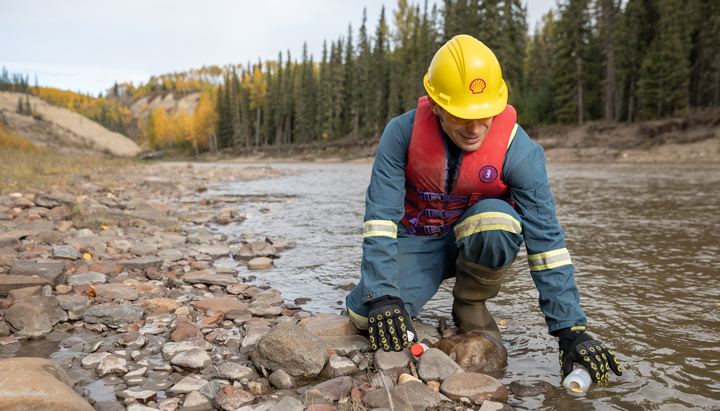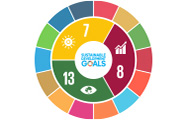Water use
We design and operate our facilities to help reduce fresh-water use and tailor our use of fresh water to local conditions. We carefully manage our water use and discharges at these facilities.
Our impact assessments help us to understand better the water risks for our projects and broader impact on the surrounding watershed.
We evaluate the long-term sustainability of water resources to select the options that avoid or minimise disruption to the environment and other users. We use a combination of tools to help us do this, including the World Resources Institute’s Aqueduct Water Risk Atlas.
Visit www.shell.com/reusing-and-recycling-water to read more about our approach to water use.
Water use
In 2019, the Pernis refinery in the Netherlands concluded a review of how we manage rainwater, cooling and process water at the site. The results highlighted a range of water management improvements, such as making maintenance work more efficient by identifying the most water-critical equipment, as well as adding water quality to the Pernis leadership team’s permanent agenda.

In Alberta, Canada, we carried out water sampling near our shales facilities.
Fresh-water use performance
Fresh water withdrawn and consumed [A]
million cubic metres
Enlarge image[A] Fresh water figures do not include once-through cooling water.
In 2019, our intake of fresh water was 192 million cubic metres, compared with 199 million in 2018. Around 90% of our fresh water intake was used for refining oil products and chemicals, with the balance mainly being consumed in oil and gas production.
Fresh water withdrawn by source
%
About 40% of fresh water intake was from public utilities such as municipal water supplies.
Fresh water withdrawn by business
million cubic metres
The volume of fresh water withdrawn by our Downstream business decreased slightly in 2019. Oil sands data are included in Others in the graph.
Waste water and produced water
We develop technologies to treat, reuse and recycle water from our operations. Where appropriate, we look for ways to treat water from our operations using natural solutions, such as constructed wetlands.
At the Petroleum Development Oman (PDO, Shell interest 34%) joint venture in Oman, the Nimr Reed Wetlands project uses a natural approach to clean the water extracted alongside oil production. PDO expanded the wetland facility in 2019, increasing the maximum capacity of water flow to 175,000 cubic metres a day from 95,000 cubic metres a day.
We track low-level concentrations of oil, grease and other hydrocarbons within water returned to the environment from the day-to-day running of our facilities (collectively referred to as “discharges to surface water”). We work to minimise these discharges in line with regulatory requirements and our own standards.
In 2019, the combined total of hydrocarbons discharged to surface water from our facilities was 1.3 thousand tonnes, down from 1.4 thousand tonnes in 2018. This was mainly due to a decrease in the amount of oil discharged to water at the Pulau Bukom site in Singapore.
Soil and groundwater
We assess and carefully manage the risks of potential soil and groundwater contamination. We conduct scientific research on potential risks of contamination from petroleum activities and share our findings with government agencies, researchers and other stakeholders to support the development of environmental guidelines.
We helped establish the collaborative soil and groundwater network in Africa called NICOLA (Network on Industrially Contaminated Land in Africa). The network comprises energy companies, mining firms, regulators and academia that share, among other things, the latest scientific research and technology for managing contaminated land more effectively. In 2019, Shell was recognised by the South African Department of Environment, Forestry and Fisheries for its leadership in developing best practice in South Africa, and its contribution to NICOLA.
Working with others
We support open innovation and work with others to improve water management, including IPIECA, the global oil and gas industry association for advancing environmental and social performance. In 2019, we worked with IPIECA to improve water horizon scanning.
 Climate change
Climate change
 Sustainable development goals
Sustainable development goals
 Safety
Safety
 About our data
About our data
